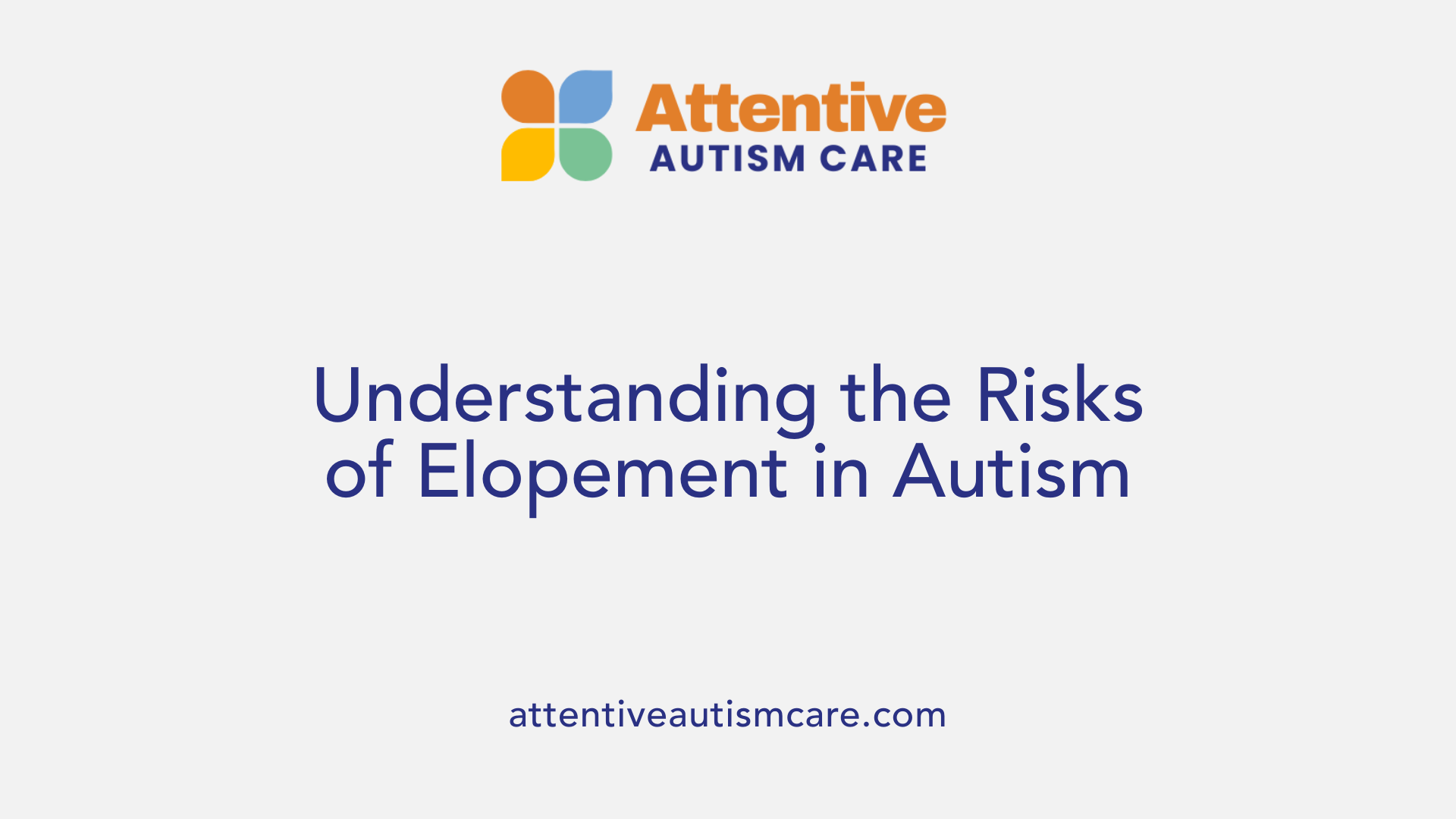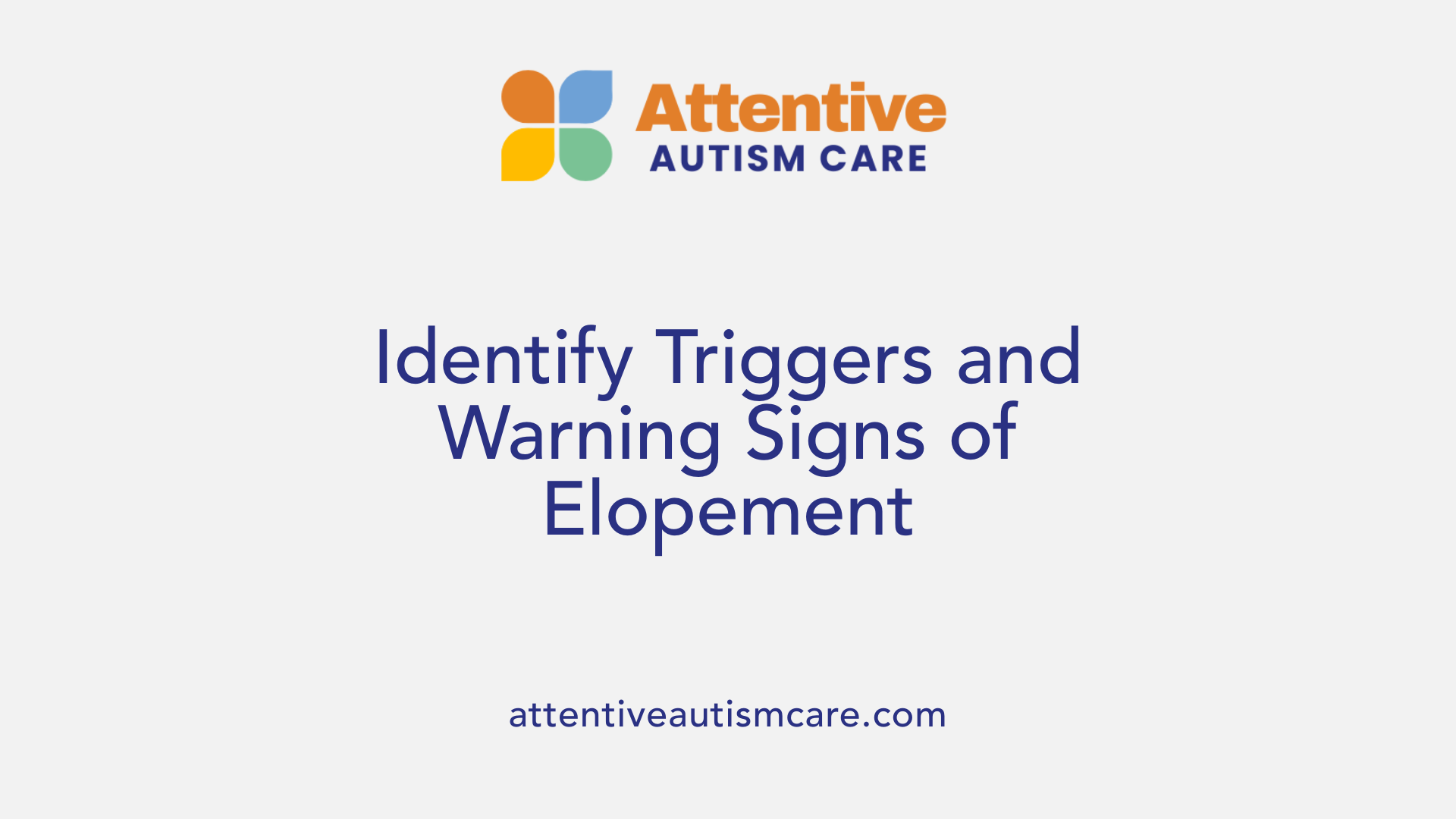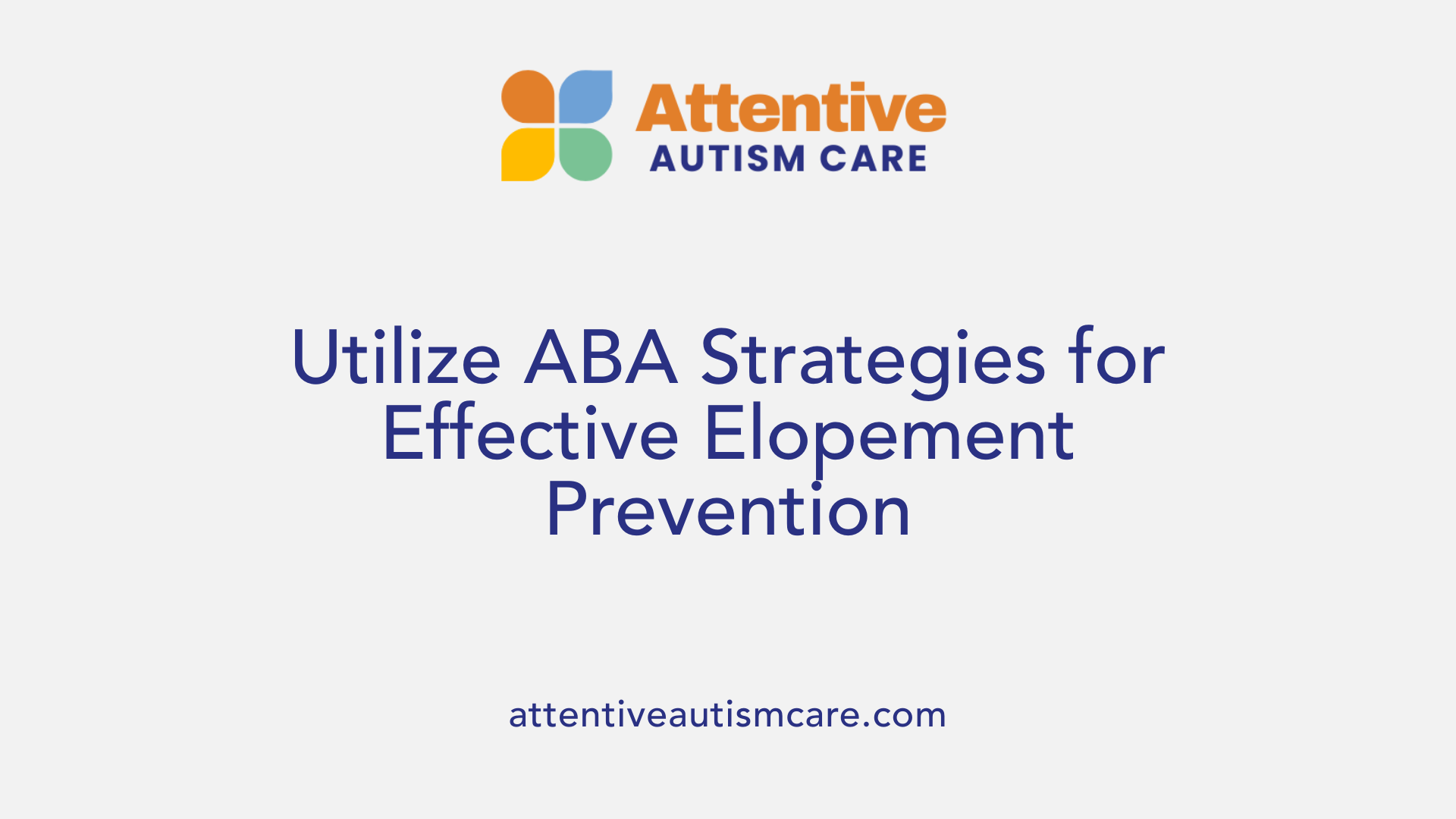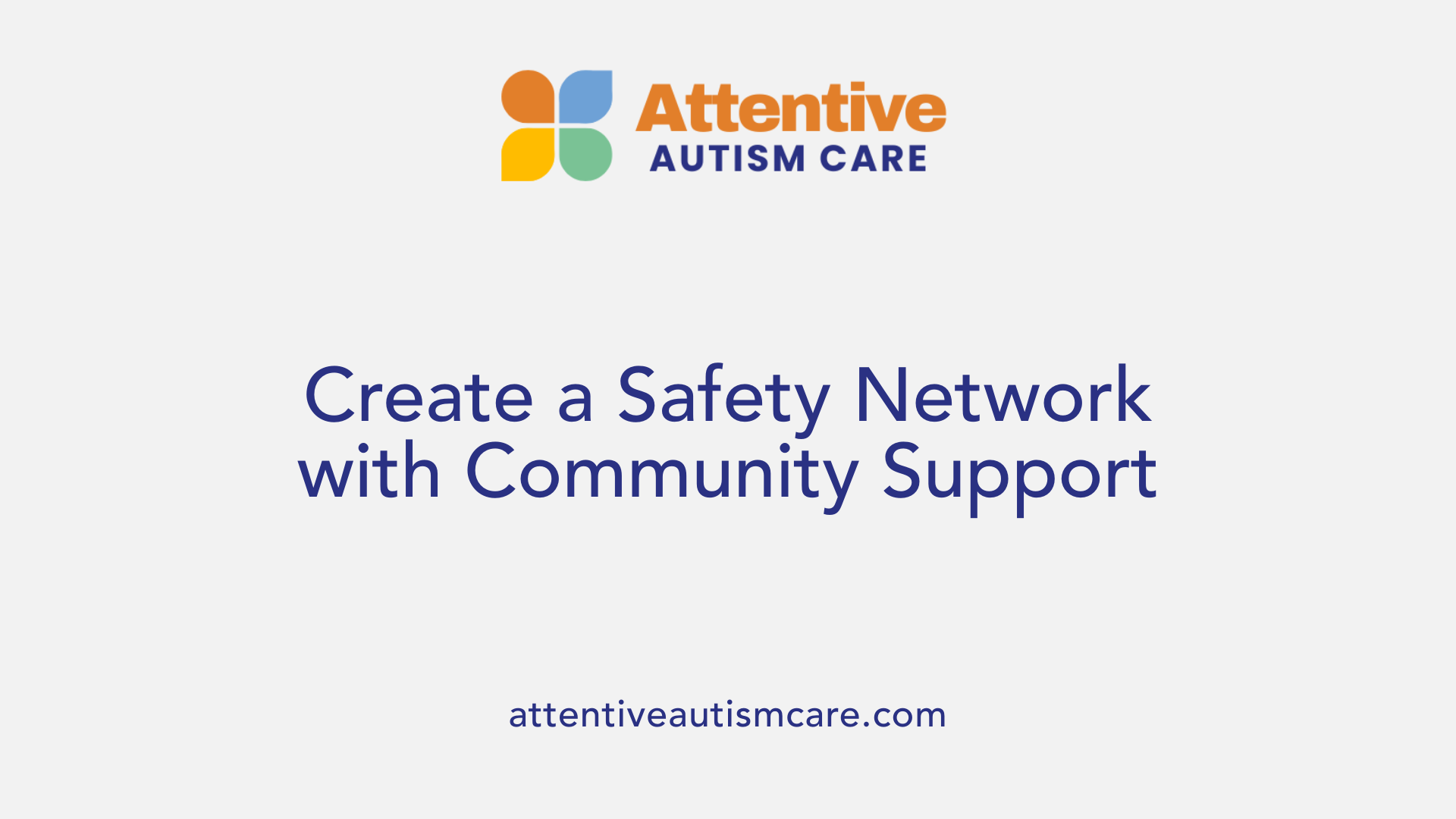How to Manage Elopement Risks for Autistic Individuals
Safeguarding Against Elopement: Strategies for Protecting Autistic Individuals

The Elopement Challenge in Autism
Elopement, or wandering away from safe environments without permission, poses significant risks to autistic individuals, especially children. With nearly half of autistic children attempting to elopement at some point, understanding the causes, dangers, and prevention strategies is critical for families, caregivers, and professionals. This article delves into comprehensive approaches to managing elopement risks, combining behavioral therapy insights with practical safety measures.
Understanding Elopement and Its Risks in Autism

What is Elopement in Autism?
Elopement in autism refers to the behavior where a child leaves a safe area or supervised environment without permission. This wandering can occur suddenly and without warning, exposing the child to a variety of dangers.
How Common is Elopement Among Children with Autism?
Children with autism are significantly more prone to elopement than their neurotypical peers—about four times as likely. Around 50% of autistic children may attempt elopement at some point, often starting as early as age four. This prevalence highlights the importance of awareness and preventative measures.
What Dangers and Fatal Outcomes are Linked to Elopement?
Elopement carries serious risks, including traffic accidents, drowning, and encounters with predators. The leading cause of death related to elopement is drowning, accounting for about 75% of fatal cases. Autistic children are 160 times more likely to drown compared to typically developing children, underscoring the critical need for safety strategies.
What Triggers Elopement Behaviors?
Triggers for elopement vary but commonly include sensory overload, communication challenges, impulsivity, fixation on specific objects or locations, and emotional distress. Some children may elope to escape uncomfortable situations, seek a desired person or item, or simply explore their environment. Understanding these motivations is essential for developing effective prevention and intervention plans.
Common Causes and Warning Signs of Elopement in Autism

What triggers and warning signs indicate a risk of elopement in autistic children?
Elopement in autistic children is often driven by several triggers. Sensory overload is a primary factor—when the child encounters overwhelming sights, sounds, or sensations, they may elope as an escape mechanism. Emotional distress or sudden anxiety can also prompt a child to leave a safe area unexpectedly.
Other triggers include fascination with specific objects or locations that attract the child’s attention, and communication difficulties that leave them unable to express their needs or discomforts effectively. These challenges sometimes lead to elopement as a way to self-soothe or meet needs.
Typical situational motivations for leaving
Children on the autism spectrum may leave safe environments to:
- Escape uncomfortable or overstimulating situations
- Seek out pleasurable activities or sensory experiences
- Obtain access to specific people or objects they desire
- Gain attention or respond to emotional needs
Behavior patterns preceding elopement
Warning signs can often be observed before an elopement event. These include:
- Attempts to leave familiar indoor or outdoor environments
- Fixating on a particular route, door, or exit repeatedly
- Difficulty managing transitions or changes in routine
- Behavioral withdrawal or seeming distant as they plan their escape
Identification of high-risk individuals
Certain children face higher risks of elopement, especially those with co-occurring conditions such as intellectual disabilities, ADHD, or anxiety disorders. Knowing which children have these additional challenges allows caregivers and professionals to tailor prevention strategies more effectively.
Recognizing these triggers and warning signs early is critical for establishing comprehensive safety plans and timely interventions that reduce the risks associated with elopement in children with autism.
Applied Behavior Analysis (ABA) Therapy: A Cornerstone in Elopement Prevention

What is Applied Behavior Analysis (ABA) therapy and how does it help individuals with autism?
Applied Behavior Analysis (ABA) therapy is a science-based and individualized treatment method aimed at enhancing skills and reducing challenging behaviors in individuals with autism. It focuses on understanding the relationship between behaviors and their environment to promote positive outcomes.
Defining ABA Therapy and Its Core Principles
ABA therapy operates on the principle that behavior is influenced by its consequences. Using techniques such as positive reinforcement, prompting, and consistent repetition, ABA encourages the development of desired behaviors while reducing unwanted ones. It is highly structured and data-driven, providing tailored interventions to meet each child's unique needs.
Addressing Elopement Behavior Through ABA
Elopement, or wandering away without permission, poses serious safety risks for autistic children. ABA therapy directly targets this behavior by identifying triggers—like sensory overload or frustration—and teaching safer alternatives. For example, instead of running off, a child may be taught to request a break or seek adult attention appropriately.
Role of Behavior Assessment and Modification
A Board Certified Behavior Analyst (BCBA) conducts in-depth assessments to recognize the antecedents and consequences that maintain elopement behavior. This analysis guides the creation of intervention plans that focus on modifying environmental factors and reinforcing functional communication skills.
Examples of ABA Techniques for Prevention
- Functional Communication Training (FCT): Teaches children to express needs such as wanting to leave or engage in specific activities.
- Positive Reinforcement: Rewards appropriate behaviors to increase their frequency.
- Role-Playing and Scenario Practice: Prepares children to respond safely in various situations where elopement might occur.
- Self-Regulation Tools: Helps children manage emotions leading to elopement.
Through these strategies, ABA therapy empowers autistic children with skills that reduce elopement incidents, promoting safety and independence.
Key ABA Techniques Employed to Reduce Elopement Behaviors
What are some common techniques or methods used in ABA therapy for autism?
Applied Behavior Analysis (ABA) therapy is widely recognized for its effectiveness in addressing elopement behaviors in children with autism. ABA employs a variety of instruction and behavior management techniques tailored to the individual needs of the child.
One fundamental approach is Discrete Trial Training (DTT). This method breaks down skills into small, manageable steps and teaches each step systematically through repeated trials. DTT allows children to master specific behaviors, such as requesting a break or responding to safety commands, by reinforcing correct responses.
Natural Environment Teaching (NET) complements this by embedding learning opportunities within everyday routines and settings. By teaching safety skills and communication in real-life contexts, children generalize what they learn, making it more meaningful and practical in preventing elopement.
Another important technique is Task Analysis and Behavior Chaining, which involves dissecting complex behaviors into sequential steps. These steps are taught in order, with progress reinforced at each stage, helping children develop comprehensive safety routines like crossing the street safely or following adult guidance in public.
Critical to all these methods are Reinforcement Strategies and Prompting Methods. Positive reinforcement rewards desired behaviors, increasing their occurrence, while prompts and cues help guide children through tasks. Over time, prompts are systematically faded to promote independent safe behavior. For example, teaching a child to request attention instead of eloping can be reinforced consistently until it becomes a habitual, safer choice.
These ABA techniques collectively foster functional communication and safety awareness, reducing elopement risks and promoting the well-being of children with autism.
Professional Providers of ABA Therapy and Their Qualifications
Who provides ABA therapy and what qualifications do these professionals typically have?
ABA therapy is primarily delivered by professionals known as Board Certified Behavior Analysts (BCBAs). These practitioners have undergone extensive training and certification through the Behavior Analysis Certification Board (BACB), which ensures they meet rigorous standards in behavior assessment and intervention.
BCBAs develop customized treatment plans that address the unique needs of individuals with autism. They are responsible for supervising the implementation of these plans, guiding therapists and caregivers in applying strategies effectively. This supervision spans various environments, including homes, schools, and community settings.
Training and certification standards
To become a BCBA, candidates must complete a graduate degree focused on behavior analysis or a related field, accumulate supervised practical experience, and pass a comprehensive certification exam. This training equips them with expertise to analyze behaviors, implement therapeutic techniques such as Functional Communication Training (FCT), and adjust interventions as needed.
Settings for delivering ABA therapy
ABA therapy is versatile and often delivered in diverse locations tailored to the individual's lifestyle. Providers work in clinical settings, schools, residential homes, and community-based environments. Such flexible delivery facilitates real-life practice of safety skills that are crucial for engaging children with autism in preventing elopement.
Supervision and ongoing program adjustments
BCBAs continually monitor therapy outcomes to refine interventions. They identify triggers for behaviors like elopement, train caregivers in behavior management strategies, and support adaptive skill-building. Regular program reviews help maintain the effectiveness of safety plans, ensuring that ABA therapy remains responsive to evolving needs.
| Aspect | Description | Importance |
|---|---|---|
| Provider | Board Certified Behavior Analysts (BCBAs) and therapists | Certified professionals ensure evidence-based and ethical therapy delivery |
| Certification | BACB credential following education, supervised experience, and exams | Validates skills for effective behavior intervention |
| Therapy settings | Home, school, clinic, and community environments | Allows generalization of skills and support in real-world scenarios |
| Supervision and program review | Continuous monitoring and adjustment of therapeutic plans | Ensures therapy adapts to child's progress and changing safety needs |
Measuring the Effectiveness of ABA in Managing Elopement
How is the effectiveness of ABA therapy measured and what outcomes can families expect?
To evaluate the success of Applied Behavior Analysis (ABA) in reducing elopement behaviors, behavioral analysts use a combination of assessment tools and ongoing data collection. This involves standardized assessments tailored to the child's specific needs and continuous monitoring of behaviors related to elopement and communication. Progress is tracked through objective data such as frequency, duration, and intensity of elopement attempts.
Assessment tools and ongoing data collection
Behavior analysts implement systematic data collection methods that record instances of elopement and the child’s responses to interventions. This helps identify triggers and tracks improvements over time. Functional behavior assessments (FBAs) pinpoint the reasons behind elopement, allowing tailored interventions like Functional Communication Training (FCT) to replace unsafe behaviors with safer communication methods.
Tracking behavioral improvements
Measures include reduced frequency of elopement, increased use of appropriate requests for attention or breaks, and enhanced safety awareness. Improvements in social skills and emotional regulation are also key indicators. Consistent progress in these areas signals the effectiveness of ABA interventions in creating safer and more manageable behaviors.
Expected outcomes for families
Families can expect to see a decrease in elopement incidents, improved child communication abilities, and greater emotional self-regulation. These changes often lead to enhanced family safety and reduced stress. Additionally, children gain essential safety skills and increase their independence while minimizing dangerous behaviors.
Importance of parental involvement and consistency
Parental involvement is critical for reinforcing ABA strategies beyond therapy sessions. Consistency in applying techniques at home and in community settings ensures skill generalization. Parents also contribute valuable observations that guide data collection and intervention adjustments, strengthening overall outcomes.
Together, structured assessments, continuous tracking, and collaborative family participation provide a comprehensive approach to managing elopement through ABA therapy, offering hope and tangible improvements for autistic children and their families.
Developing a Comprehensive Safety Planning Cycle
Assessment of Child's Specific Elopement Triggers
Understanding the reasons behind an autistic child's elopement is the first step in building an effective safety plan. Common triggers include sensory overload, communication challenges, emotional distress, and a fascination with certain objects or locations. A thorough assessment by professionals, such as Board Certified Behavior Analysts (BCBAs), can identify these triggers by observing precursor behaviors and environmental factors that prompt the child to leave a safe area.
Teaching Personalized Safety Skills
Once triggers are identified, teaching the child safety skills tailored to their needs is essential. This includes role-playing situations like 'stop drills,' water safety, or road safety rules, which build awareness and confidence. Behavioral interventions such as Applied Behavior Analysis (ABA) and Functional Communication Training (FCT) help children communicate their needs effectively, reducing the impulse to elope. Safety skills should be relevant to the child’s environment and capabilities.
Collaborative Planning with Caregivers and Support Networks
Developing the safety plan should be a collaborative effort involving parents, caregivers, educators, and community members. Sharing detailed information about the child's triggers and behaviors ensures everyone understands how to respond during an elopement incident. Establishing a safety network that includes neighbors, first responders, and schools facilitates quicker reactions and support when needed.
Regular Monitoring and Updating of Plans
Safety plans are not static and require continual evaluation and adjustment. Regular monitoring of the child's behavior, response to interventions, and any new risks helps keep the safety plan effective. Updates should consider developmental changes, environment shifts, or newly identified triggers to maintain vigilance and protect the child against potential dangers.
This cyclical approach of assessment, skill-building, collaboration, and review provides a robust framework to significantly lower elopement risks and enhance safety for autistic children.
Environmental Modifications and Technology to Prevent Elopement
Home safety: locks, alarms, and fences
Creating a secure home environment is crucial to preventing elopement in children with autism. Installing childproof locks on doors and windows helps restrict access to exit points that the child might use to leave unsupervised. Door and window alarms provide immediate alerts to caregivers if these access points are breached, increasing the chance of quick intervention. Additionally, fences can create physical barriers around yards and play areas, further reducing escape routes.
Use of wearable GPS and ID bracelets
Wearable technology plays a key role in enhancing safety. GPS trackers, worn as watches or attached to clothing, allow real-time monitoring of the child’s location. These devices often include tamper-resistant features to prevent removal and enable rapid location if wandering occurs. ID bracelets provide essential information such as medical details and emergency contacts, aiding first responders and community helpers in safely returning the child.
Practical tips like bright clothing and hidden keys
Simple strategies complement technology and environmental modifications. Dressing children in bright, easily visible clothing makes spotting them in crowds or outdoor spaces more manageable. Caregivers should hide house keys or use magnetic lock boxes to prevent unauthorized exits. Constant supervision and close proximity when in public settings remain important preventive practices.
Technology examples such as AngelSense devices
Among popular tracking devices is AngelSense, designed specifically for vulnerable children. It offers continuous GPS updates, two-way voice communication, and alerts for unusual movements or attempts to remove the device. These features provide peace of mind for caregivers and enhance rapid response capabilities during elopement incidents.
| Intervention Type | Specific Measures | Benefits |
|---|---|---|
| Home Safety | Childproof locks, alarms, fencing | Restricts unauthorized exit, quick alerts |
| Wearable Technology | GPS trackers, ID bracelets | Real-time tracking, emergency info readily available |
| Practical Tips | Bright clothing, hidden keys | Improves visibility, prevents easy exits |
| Specialized Devices | AngelSense GPS watch | Continuous location updates, two-way communication |
These environmental and technological interventions form a comprehensive safety net that significantly reduces the risks associated with elopement in children with autism.
Teaching Safety Skills and Role-Playing Scenarios
Water Safety and Drowning Prevention
Drowning is the leading cause of death related to elopement in children with autism, accounting for 75% of fatal cases. Teaching water safety is critical. Adaptive swimming lessons tailored for autistic children can build confidence and promote safe behavior around water. Reinforcing these lessons with Applied Behavior Analysis (ABA) strategies further reduces drowning risks by strengthening water awareness and appropriate responses.
Road and Traffic Safety Education
Traffic accidents are a major danger for children who elope. Teaching road safety skills, including looking both ways before crossing, recognizing traffic signals, and understanding the consequences of running into streets, is essential. Parents and caregivers should frequently practice these skills and encourage children to stay close in public spaces to prevent wandering into hazardous areas.
Use of Social Stories and Visual Cues
Social stories and visual cues provide clear, structured explanations of safety rules and expected behaviors. These tools help autistic children understand the importance of not leaving safe areas without permission. Visual schedules and simple, consistent messaging can reduce anxiety, aiding comprehension and making safety instructions easier to follow during everyday routines.
Practicing 'Stop Drills' and Staying Close Behaviors
Role-playing 'stop drills' during supervised outings helps children learn to stop immediately when asked and stay near caregivers. This practice reinforces self-control, reduces impulsivity related to elopement, and builds confidence. Regular rehearsal of these behaviors in various settings ensures children understand and remember the importance of staying within safe boundaries.
Teaching safety skills through tailored education and role-playing equips autistic children with practical tools to avoid dangerous situations. Consistent reinforcement by caregivers and educators strengthens these behaviors, forming a critical part of comprehensive elopement prevention efforts.
Building and Involving a Community Safety Network

Introducing children to neighbors and first responders
A crucial step in creating a safety net for autistic children prone to elopement is familiarizing them with trusted community members. This includes introducing children to neighbors, local police officers, fire personnel, and other first responders. These individuals can provide immediate assistance if a child wanders or becomes lost, bridging the gap before a caregiver can respond.
Informing schools and community members
Schools and local community members play a vital role by being aware of a child’s elopement risk and understanding how to respond appropriately. Sharing information about the child’s behaviors, safety plans, and identifying features can help personnel act quickly and compassionately during an incident.
Encouraging community vigilance and response protocols
Developing clear protocols for community vigilance involves neighbors and others being alert and knowing how to respond if they see a child leaving a safe environment. Encouraging neighbors to report sightings promptly and offering guidance on how to approach or engage with the child helps ensure timely and effective interventions.
Benefits of a connected support environment
A well-established safety network reduces the risk posed by elopement by creating a supportive, watchful environment around the child. It promotes faster response times, reduces anxiety for caregivers, and builds a community attuned to the needs and challenges faced by autistic children. This collective awareness not only safeguards the child but also fosters inclusion and understanding within the neighborhood.
By building and maintaining a robust community safety network, families of autistic children can significantly enhance safety and create a responsive environment that protects against the risks associated with elopement.
Responding Effectively to an Elopement Incident

Immediate actions for caregivers
When a child with autism elopes, acting swiftly and decisively is critical. Caregivers should first try to visually track and safely retrieve the child if they are within sight. Quick movement towards the child without causing alarm or distress can sometimes prevent further wandering.
Alerting neighbors and emergency services
If the child is not immediately visible or unable to be safely retrieved, caregivers should alert neighbors and anyone nearby to expand the search area promptly. Calling emergency services is essential if the child remains missing after initial search efforts, providing responders with detailed information about the child’s tendencies, usual routes, and any known triggers.
Search strategies based on child’s tendencies
Understanding the child's habits and elopement triggers aids in focusing search efforts. Children often head towards familiar, stimulating, or favored locations such as bodies of water, parks, or specific objects of fascination. Caregivers should consider these tendencies while coordinating search activities with community members and authorities.
Updating safety plans post-incident
After the child is safely recovered, it's important to review and revise existing safety plans. This includes assessing what failed and implementing new measures like enhanced locks, alarms, or behavioral interventions. Sharing these updates with the child’s support network ensures everyone remains informed and prepared for future prevention and response.
Emotional Support for Families Managing Elopement Risks
Challenges Faced by Caregivers Including Guilt and Burnout
Families managing the risk of elopement in children with autism often face intense emotional challenges. Feelings of guilt and fear are common, as caregivers constantly worry about their child's safety. The unpredictable nature of elopement episodes can lead to heightened stress, which, over time, can cause burnout.
Importance of Self-Care and Support Groups
To navigate these emotional strains, self-care emerges as a vital practice. Caregivers are encouraged to prioritize their own well-being through regular rest, stress management activities, and seeking social support. Support groups specifically for families dealing with autism and elopement risks provide a safe space to share experiences, exchange practical advice, and reduce feelings of isolation.
Accessing Professional Counseling and Respite Care
Professional counseling offers valuable help in processing complex emotions like guilt and anxiety. Mental health professionals can also guide families on coping strategies tailored to their unique circumstances. Additionally, respite care services give caregivers needed breaks, allowing them time to recharge, which is essential for maintaining long-term caregiving capacity.
Building Resilience While Managing Safety Concerns
Creating a strong safety plan alongside emotional support helps families build resilience. Understanding that feeling overwhelmed is natural, and seeking help when needed, empowers caregivers. Combining practical safety measures with emotional support resources enables families to better manage the ongoing challenges of elopement risks while preserving their well-being.
Comprehensive Care: Combining Behavioral Therapy and Practical Measures
Effective management of elopement risks in autistic individuals demands an integrated approach. Applied Behavior Analysis (ABA) therapy offers powerful tools to address underlying behaviors by teaching functional communication and safety skills. Complementing behavioral strategies with environmental modifications, technology like GPS tracking, and community support helps create a robust safety net. Families and caregivers benefit from thorough preparation, ongoing vigilance, and emotional support to navigate these challenges successfully. Through informed planning and professional collaboration, the risks associated with elopement can be significantly reduced, enhancing safety and quality of life for autistic individuals and their families.



































































































